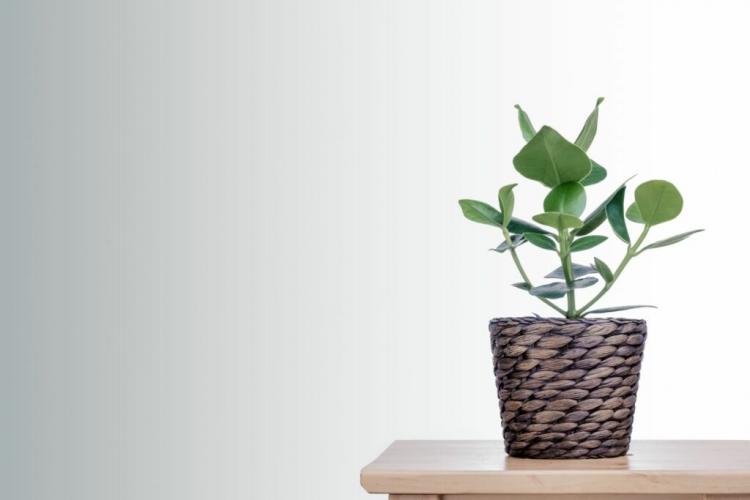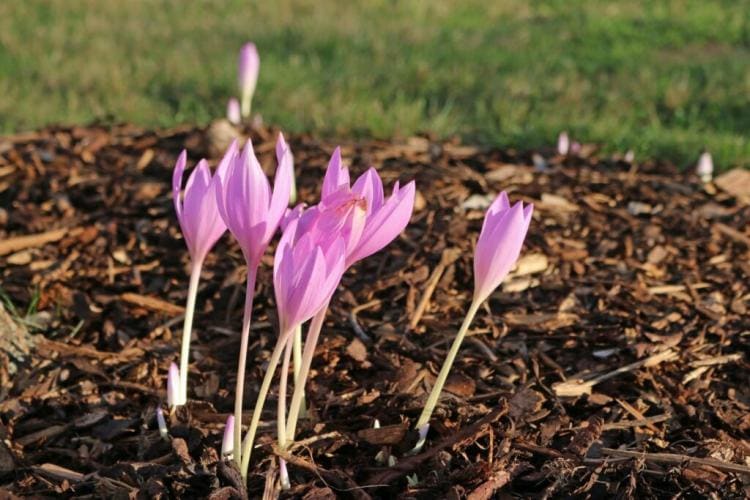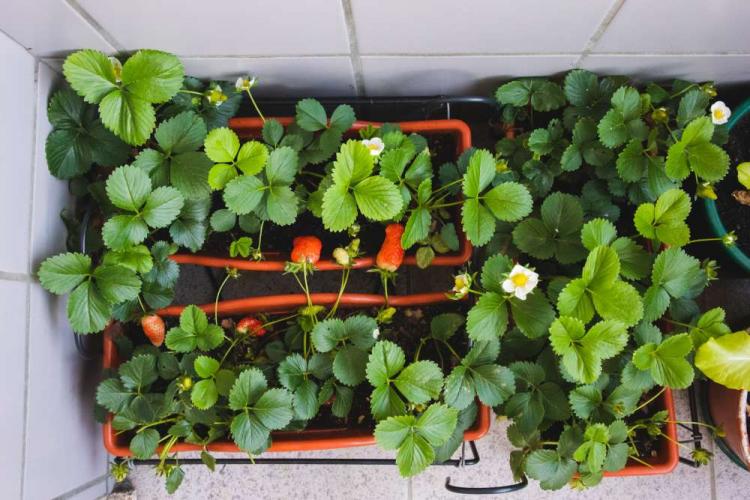Zucchini planting & growing yourself successfully
Zucchini are rich vegetable plants that should not be missing in any kitchen garden. We give tips on growing zucchini and growing them successfully in the garden and in pots.
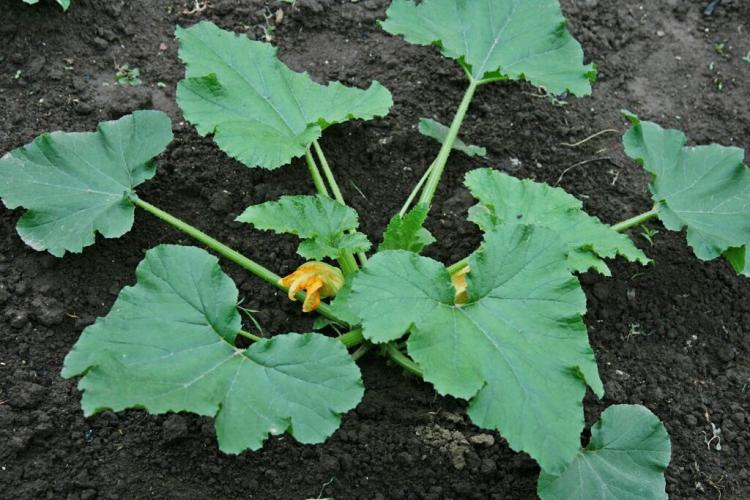
Young zucchini plants can be put outside from mid-May [Photo: Akimoff / Shutterstock.com]
The zucchini ( Cucurbita pepo subsp. Pepo convar. Giromontiina ) is an easy-care, beginner-friendly vegetable that produces numerous and versatile fruits. Growing zucchini in the garden or on the terrace and balcony is therefore particularly worthwhile. In this article you will learn everything about growing and planting the young zucchini plants.
Zucchini: origin and characteristics
Table of Contents
The courgette plant belongs to the cucurbit family (Cucurbitaceae), which can be recognized by the typical orange-yellow flowers and later also by the fruits. Originally from Central America, they were brought to Europe hundreds of years ago. Zucchini are annual and extremely sensitive to frost. A distinction is also made between creeping and bushy zucchini varieties.
Plant zucchini
Zucchini are usually sown in the house or greenhouse so that they can be put outside as young plants in mid-May. Bringing zucchini forward shortens the time until the first harvest: the first fruits are formed as early as June. We give tips on the successful sowing, pricking and planting of zucchinis.
Sow zucchini and ferment
From mid-April onwards, the large seeds of the zucchini are sown in small pots or seed trays. The seeds bring their own supply of nutrients and should therefore be placed in nutrient-poor soil – such as our Plantura organic herb & seed soil. The sowing depth is 2 to 3 cm, the optimal temperature for germination is 18 to 20 ° C. Always keep the potting soil well moist for the next few weeks. The first zucchini seedlings will appear after 7 to 10 days. The direct sowing of courgettes outdoors is also possible from mid / late May, as soon as late frosts are no longer to be expected. Zucchinis that are sown directly bear the first fruits after about 8 weeks.
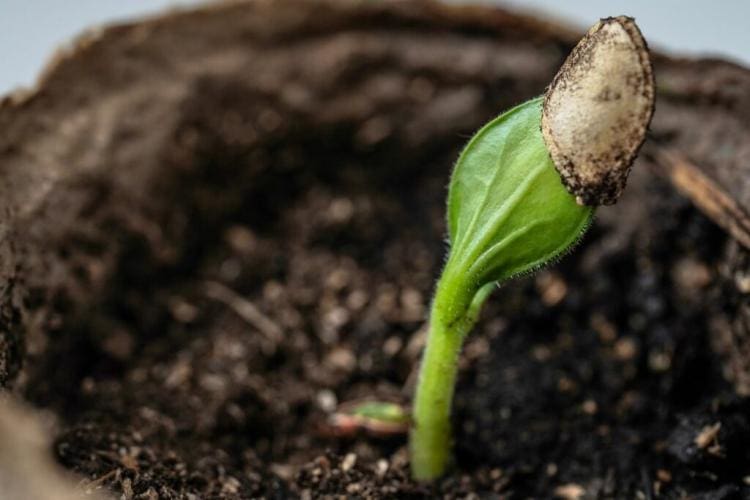
Zucchini need warmth and moisture to germinate [Photo: Anastasiya Ka27 / Shutterstock.com]
Prick the zucchini
As soon as the seedlings get their first leaves after the cotyledons, they can be pricked out and converted into nutrient-rich substrate. First fill pots with a diameter of at least 9 cm about halfway with high-quality potting soil, such as our Plantura organic tomato and vegetable soil. It contains essential nutrients such as nitrogen, phosphorus and potassium, which your zucchini seedlings will supply until they are planted. When pricking the zucchini plants, the seedlings are lifted from the potting soil together with the roots using a pricking stick, spoon or wooden popsicle stick. The plant should be touched by the leaf to avoid injuries and bruises to the stem and roots. Now put the zucchini in the half-full pots, fill up to the brim with potting soil and water vigorously. Over the next few weeks, the plants should be watered regularly and placed in a warm and bright place.
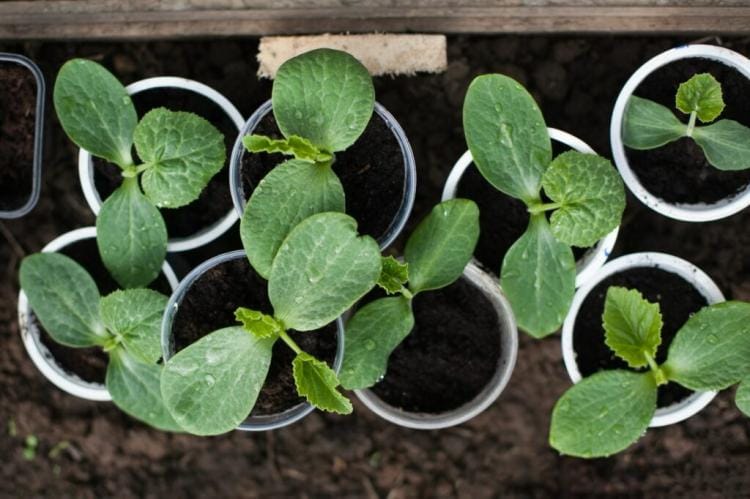
Zucchini can be pricked as soon as the first real leaf has formed. [Photo: Alina Demidenko / Shutterstock.com]
Planting out zucchini: when can you go outside?
The planting time for zucchini outdoors begins in mid-May, after the ice saints. You can calculate about one square meter of planting requirement per plant, so the zucchini planting distance is about one meter on all sides. With narrower, climbing varieties that are tied to a trellis, a distance of 60 to 80 cm should be maintained. In general, a generous distance is recommended so that the plants can spread out easily and to prevent infections caused by fungi. It is worthwhile to work in compost before planting out, because zucchini plants are heavy eaters and need larger amounts of nutrients. The young zucchini plants are planted in the ground up to the base of the leaves. Be careful not to damage the stem of the plant. Then water vigorously. Spreading a layer of mulch from grass clippings has proven to be a good maintenance measure: This always keeps the soil around the zucchini plant well moist and provides food for soil organisms. You can find more tips on caring for zucchinis in our special article.
The right location for zucchini
Overall, zucchini plants are not very demanding in terms of their location. The optimal location for zucchini is on well-drained, medium-heavy, humus and nutrient-rich soils with good water storage. The high-yield vegetable loves warm, sunny and sheltered locations. To grow zucchini on the balcony, the planting site should face south. Climbing zucchini varieties can be led up on balconies along a climbing aid. Zucchini can also be planted in the raised bed. Here it is advisable to choose a space-saving, climbing variety that is used on the edge of the raised bed and can grow down on it.
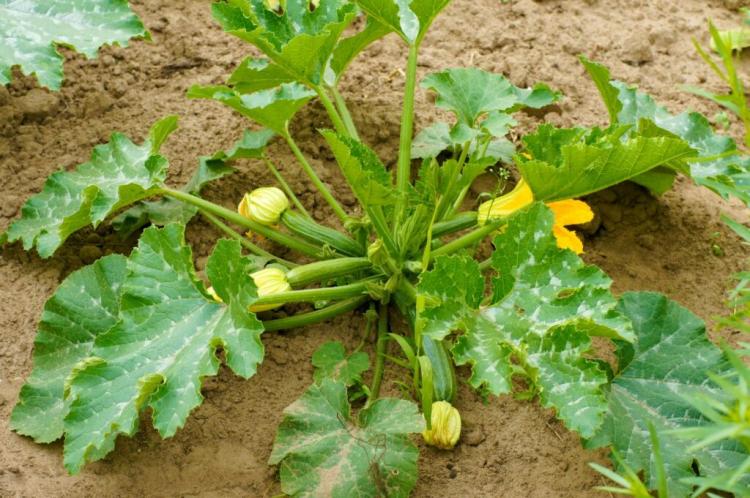
Zucchini shouldn't be planted too densely [Photo: Natalia van D / Shutterstock.com]
These tips will help you choose the right location for the zucchini:
- Nutrient-rich, well-drained soils or potting soil.
- Warm, sunny and sheltered locations.
- Sufficient plant spacing and space: 1 – 1.5 m² per plant.
- Growing zucchini on balconies and raised beds: Select the south side and the climbing, space-saving variety.
In a mixed culture, the most diverse vegetable plants benefit from each other by combining suitable species with one another. We present the best neighbors to plant for zucchini.
Plant zucchini in a pot
In addition to growing outdoors, the zucchini can also be planted in a tub and placed in a sunny, warm location. The pot size should have a volume of at least 40 liters. Fill in nutrient-rich soil for the zucchini and then place the young plants in the pot. The plants should be watered regularly, because the soil in pots threatens to dry out much faster. Zucchini in the pot also benefit from a protective layer of mulch.
Multiply zucchini
With the right technique, you can propagate your zucchini yourself and obtain seeds. This only works with solid-seeded zucchini, not with plants from hybrid seeds. Cucurbits such as zucchini, squash and Co. are strict cross-pollinators that rely on visits from insects. Only if there is no other closely related cucurbit within a radius of three kilometers can crossbreeding through bee pollination be almost ruled out. The plants form purely male flowers with a long peduncle and pollen and purely female flowers with clearly recognizable ovaries and sticky stigmas. The flowers only open for one day at a time. If you want to propagate zucchini seed-proof and prevent other varieties or even nearby pumpkins from intersecting, you have to pollinate the flowers by hand.
To do this, you first need around 6 to 12 healthy plants of the same variety that are blooming at the same time. Approximately three male flowers from another plant are expected per female flower for successful pollination without inbreeding. Thick swollen flower buds just before opening, carefully close with a masking tape in the evening hours. The zucchini flowers cannot open like this. The next morning the prepared male flowers are picked and the petals removed. In this way, the columnar, overgrown anthers with pollen are exposed. Then carefully remove the ribbon of the female flower so that it unfolds. Then you dab the stigma of the flower with the pollen of the male flowers and then seal the female again with masking tape.
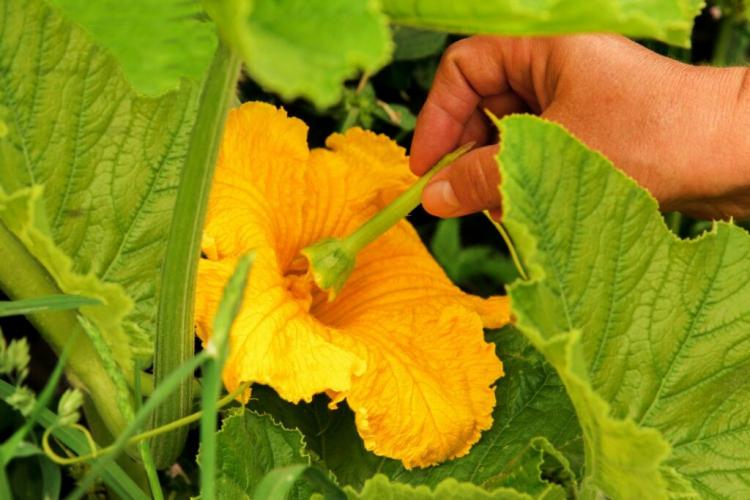
Zucchini can usually only be propagated properly by manual pollination [Photo: masterpiece creator / Shutterstock.com]
In the next few days, after successful pollination, the petals will die off and release a small fruit. Label the zucchini fruit so that you will later know which flower was the pollinated one. Let the fruit rest on the plant until the seeds are ripe. It will become large and hard on the surface until the stalk dries out and the seed is completely ripe. The pollinated fruit should definitely be harvested in late autumn before the first frost. Now carefully cut the zucchini open and remove the seeds. After drying at room temperature, these can be stored in a cool, dry and dark place for up to six years.
Zucchini seeds gain at a glance:
- Plant several plants of the same, solid variety.
- Close three male and one female buds of different plants on the evening before opening the flowers.
- The next morning, pick the male flowers and expose the stamens.
- Open the female flower and pollinate it with pollen by hand.
- Close the flower again and mark the resulting fruit.
- Leave the zucchini on the plant until the seeds are ripe, harvest before the frost.
- Cut the fruit open, remove the seeds and allow to dry.
- Store zucchini seeds in a cool, dry and dark place.
The zucchini harvest season begins in early summer and many fruits often form quickly. We provide tips on harvesting, storing and using zucchini.


